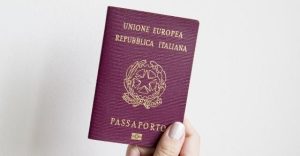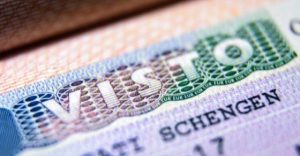Security checks on non-EU citizens entering the Schengen Area
Aug 09, 2018
EU citizens, non-EU residents, and visitors to the EU need to be able to freely and safely travel within the Union. The Schengen Area has made this a concrete reality.

The Schengen Area is one of the greatest achievements of the EU. It is an area without internal borders, an area within which citizens, many non-EU nationals, business people and tourists can freely circulate without being subjected to border checks. Since 1985, it has gradually grown and encompasses today almost all EU States and a few associated non-EU countries[1].
While having abolished their internal borders, Schengen States have also tightened controls at their common external border on the basis of Schengen rules to ensure the security of those living or traveling in the Schengen Area.
A single set of rules for external border checks on persons
The Schengen Borders Code governs the crossing of the external borders, facilitating access for those who have a legitimate interest to enter into the EU. A special Local Border Traffic Regime has also been established to facilitate entry for non-EU border residents who frequently need to cross the EU external border. A common visa policy further facilitates the entry of legal visitors into the EU.
Security for citizens and travelers
EU State authorities need to cooperate on border management to ensure the security of citizens and travelers in the EU. A number of information sharing mechanisms are central to this cooperation.
- The Visa Information System (“VIS”) allows the Schengen States to exchange visa data, in particular data on decisions relating to short-stay visa applications.
- The Schengen Information System (“SIS”) allows Schengen States to exchange data on suspected criminals, on people who may not have the right to enter into or stay in the EU, on missing persons and on stolen, misappropriated or lost property.
The crossing of external borders
The abolition of internal border controls cannot come at the expense of security. Since no checks are carried out at the borders between Schengen states, EU States have decided to join forces to attain the dual objective of improving security through more efficient external border controls, while facilitating access of those having a legitimate interest to enter the EU territory.
The Schengen Borders Code (EU Regulation 562/2006) provides the EU States with a single set of common rules that govern external border checks on persons, entry requirements and duration of stays in the Schengen Area. By harmonizing these rules, the EU seeks to render them more efficient, whilst increasing their transparency.
Art. 5 provides for that:
for stays not exceeding 3 months per six month period, the entry conditions for third-country nationals shall be the following: … (d) they are not persons for whom an alert has been issued in the SIS for the purposes of refusing entry; (e) they are not considered a threat to public policy, internal security, public health or the international relations of any of the Member states, in particular where no alert has been issued in Member States’ national databases for the purpose of refusing entry on
the same grounds.
Similarly, through the Schengen Visa Code (EU Regulation 810/2009) the EU States have harmonized conditions and procedures for issuing short-stay visas (i.e. visas for stays that do not exceed three months).
Under art. 21 of the Code:
- In the examination of an application for a uniform visa, it shall be ascertained whether the applicant fulfills the entry conditions set out in art. 5(1) … (d) and (e) of the Schengen Borders Code, and particular consideration shall be given to assessing whether the applicant presents a risk of illegal immigration or a risk to the security of the Member States ……..
- In respect to each application, the VIS shall be consulted ……….
- While checking whether the applicant fulfils the entry conditions, the Consulate shall verify: ….. (c) whether the applicant is a person for whom an alert has been issued in the SIS for the purpose of refusing entry; (d) that the applicant is not considered a threat to public policy, internal security or , public health as defined in art. 2(19) of the Schengen Border Code2 or to the international relations of any other Member States ………
The EU has also established a list of countries (EU Regulation 539/2001) whose citizens are subject to a visa requirement when entering the EU and a list of countries for which this requirement is waived (long-stay visas and residence permits for visits exceeding three months remain subject to national conditions).
The Schengen Information System (“SIS”)
The Schengen Information System is the largest information system for public security in Europe. By allowing for easy information exchanges between national border control, customs and police authorities, it ensures that the free movement of people within the EU can take place in a safe environment.
SIS is used by border guards as well as by police, customs, visa and judicial authorities throughout the Schengen Area. It holds information on persons who may have been involved in a serious crime or may not have the right to enter or stay in the EU. It also contains alerts on missing persons, in particular children, as well as information on certain property, such as banknotes, cars, vans, firearms and identity documents, that may have been stolen, misappropriated or lost. Information is entered into the SIS by national authorities and forwarded via the Central System to all Schengen States. The SIRENE Manual lays down the procedures for EU States’ exchanges of supplementary information on alerts stored in SIS.
[1] States part of the Schengen area are: Austria, Belgium, Czech Republic, Denmark, Estonia, Finland, France, Germany, Greece, Hungary, Iceland, Italy, Latvia, Liechtenstein, Lithuania, Luxembourg, Malta, Netherlands, Norway, Poland, Portugal, Slovakia, Slovenia, Spain, Sweden, Switzerland. UK and Ireland are not signatories of the Schengen agreement
Giuditta Petreni has over 10 years of experience in assisting companies and business investors with relocation of managers and staff to Italy. Giuditta has extensive experience advising corporate and private clients on a full range of Italian immigration categories. She is fluent in Italian and English.



























